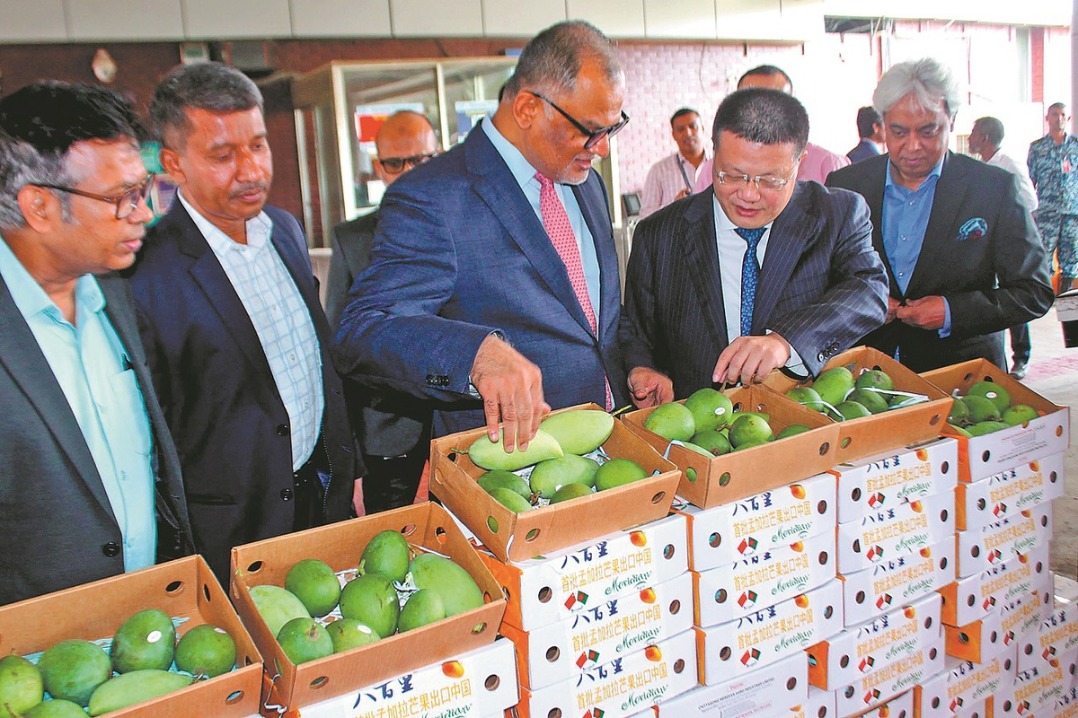Homegrown robot helps increase corn yields

The first domestic intelligent robot developed to detassel corn recently began operating at a demonstration base in Changji city, Xinjiang Uygur autonomous region.
Detasseling is the act of removing pollen-producing flowers, or the tassels, from the tops of corn plants and putting them on the ground. This controlled form of pollination creates hybrid corn, whose yields are much higher than that of corn cultivated by other normal pollination methods.
Equipped with the Beidou navigation system, high-precision laser radar and image recognition technology, the new robot detassels corn autonomously with excellent precision.
Its efficiency is 10 to 15 times higher than traditional manual detasseling methods, significantly reducing work time and enhancing seed quality.
Luo Shixu, vice-president of Joinhope Seed Co, which administers the demonstration base, explained that in corn seed production, detasseling can effectively reduce the nutrient consumption of corn plants. This allows nutrients to be concentrated towards the ears, thereby increasing corn seed production and improving seed quality.
The robot, which was developed by the Xinjiang Jiuyu Technology Co, can detassel as much as 0.7 of a hectare of corn per hour, according to Luo. A person working manually could detassel less than 0.067 of a hectare of corn per hour, and the labor costs are higher.
Moreover, the robot examines leaf and ear positions to determine the probing distance, extracting corn tassels without blind spots and adapting to plant heights ranging from 1.5 meters to 2.3 meters. The average detasseling rate is above 85 percent, reaching over 90 percent at its peak, Luo said.
The robot is electrically powered, which allows its arms to be adjusted more precisely compared to traditional hydraulic systems, resulting in lower leaf damage and failure rates, Luo stated.
The price of the robot and its components, as well as its maintenance costs, are much lower than that of traditional detasseling machines, said Ma Bo, general manager of Xinjiang Jiuyu, adding that it has entered mass production.
During operation, the robot consumes only 6 kWh per hectare, equivalent to about 3 yuan ($0.41) for electricity. It has a battery life of up to 2,000 cycles.
Wang Yuxi, chief expert of the National Agricultural Technology Extension Service Center, said, "Replacing traditional manual detasseling with mechanical methods can help realize full-cycle mechanized seed production, minimize damage to corn plants, maximize labor productivity, seed yield and quality, and make the production more scientific and efficient.
"This is of great significance for promoting high-quality development in the seed industry."
Today's Top News
- China sees growth in number of tourist trips and spending in the first half
- Xi, Nepalese president exchange congratulations on 70th anniversary of ties
- Relief efforts intensified as rain death toll mounts
- Cultural insight helps chart path to urbanization
- People's war principle drives PLA development
- SCO summit poised for fruitful outcomes
Most Viewed
- DeepSeek's success an opportunity for global AI cooperation
- Black people flee US in disgust with racism
- Ten photos from across China: July 25 – 31
- Cultural insight helps chart path to urbanization
- Chinese military's role in safeguarding world peace






























